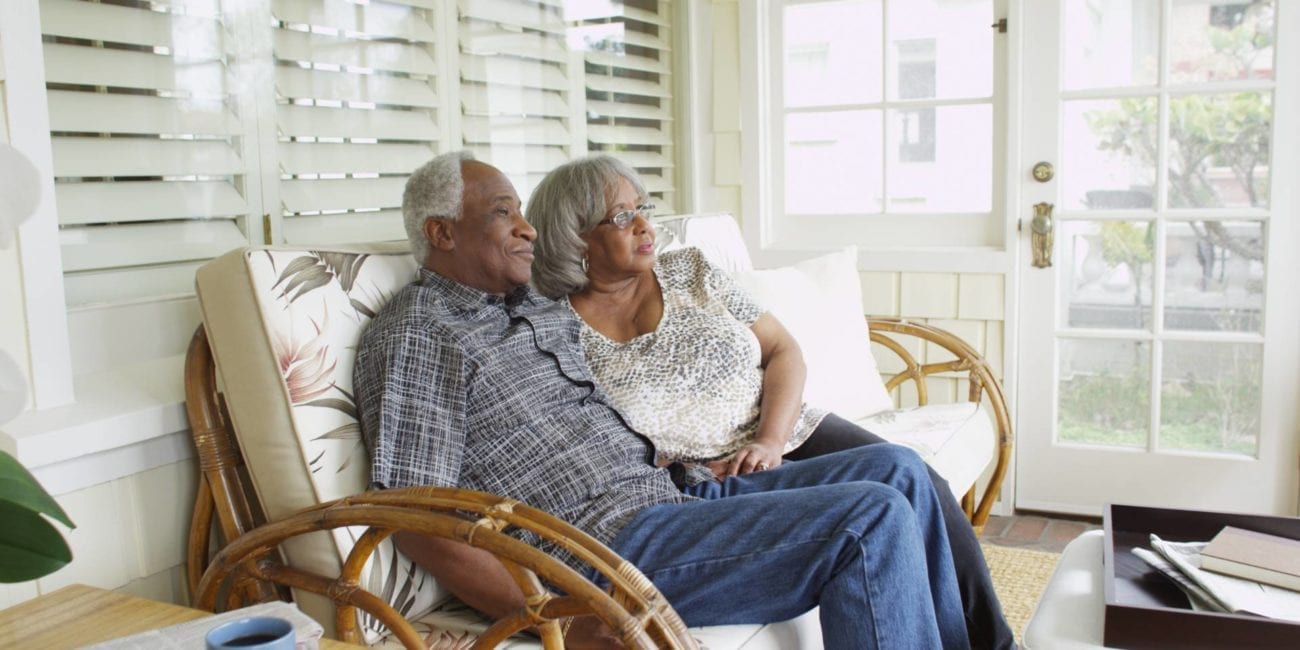Most Americans will need outside help to care for their aging parent at some point. While residential facilities are a common choice, there are other solutions to explore such as in-home care services or adaptive technology. It is important to remember that you have options.

What Are the Alternatives to Assisted Living Facilities?
It is expected that our loved ones might one day need more assistance with their daily lives. This is a normal part of the aging process.
Elderly Americans have increasingly expressed a preference to stay at home through their aging journey instead of living in a residential facility. This aging-in-place model is preferred by almost 75% of aging adults.
While there are many benefits from an aging-in-place approach, everyone’s needs are different.

What Does In-Home Care Mean?
In-home care for the elderly is a general term for and can cover non-medical or medical care. Non-medical services assist our aging parents with chores such as laundry or shopping assistance, or help with bathing. Non-medical home care can also provide companionship to those suffering from loneliness. Medical In-home care can offer more health support, and is generally staffed with nurses or other skilled medical professionals who can provide help with medication injections or wound care. Families may have different needs at different times and can alternate or may have both simultaneously.
The most common is non-medical in-home care where aids assist with daily needs and activities. These activities of daily living (ADLs) are usually what aging adults struggle with the most when aging-in-place, and include bathing, cleaning, cooking, getting the mail, and other necessary tasks. These once-simple activities can be physically daunting and even increase the risk of a fall or accident for our loved ones.
In-home care can include:
- Home chores (cleaning, laundry, lifting items)
- Food management and preparation
- Social and cognitive support
- Daily living needs (bathroom, bathing, changing clothes)
- Mobility support
- Temporary breaks for caregivers (Respite care

What Are the Different Types of Home Care Services?
In-home care services can offer a broad range of support. A few general types are listed below. Keep in mind that many providers can usually address multiple needs, as well when create an in-home care plan for you and your loved one.
Companionship Care
Everyone has social needs, including our loved ones. However, access to social circles can decrease as they age. Many elderly adults struggle with isolation and loneliness, and these feelings can make take a toll on their mental health.
Increased sociability has been shown to benefit physical health. Companionship can be a valuable tool to support an aging family member. Busy caregivers cannot give as much social time to our loved ones as we want or they might require and having an extra hand for this can alleviate the guilt so many feel. From engaging in conversation to doing a puzzle together, in-home companions will provide a loved one the extra attention they might be craving. Many aging adults see cognition benefits from recalling old stories or explaining their favorite game to a newcomer. A new caregiver can provide an expanded social horizon.
Companions can often help with light chores and activities, but their focus will be quality time. An ideal candidate for companionship in-home care is an aging adult who is still relatively independent in their daily lives but could use some additional social support.
Personal Care
If an aging adult is beginning to struggle with their daily tasks, personal in-home care might be a better next step.
Personal in-home care can provide for basic daily needs. This care will focus on daily activities like bathing, cleaning, cooking, movement routines, and more. It can support a variety of needs and levels of independence.
An ideal candidate for personal in-home care is an aging adult who needs help with daily functions but does not need full medical support. While these types of services can do some light medication management, it is essential to note that in-home care staff are usually not medical professionals. The care provider can help by identifying the medication, but the aging adult must be able to take their medication without physical assistance (local laws may vary).
Medical Home Care
Unlike other forms of in-home care, this type of health care is usually directed by a physician who will connect a family to a suitable provider.
In-Home Health Care support can include:
- Medication management and administration
- Occupational, physical, and other therapies
- Wound and post-surgical care
- Injections, infusions, and blood withdrawals
- Chronic condition support
Time Offerings
Medical In-home care may be required for a limited time, such as if a loved one is recovering from surgery, or as an ongoing service for a chronic condition. Non-medical home-care will usually continue long-term and change as the senior’s needs progress.
First, assess a loved one’s needs and have a conversation together. Next, determine the extent and scope of the in-home care requirements. Does the loved one need respite care after a procedure? Or do they need live-in support care? Would a few hours a week benefit them? Or would a full-time aide be required?
Once agreeing on the type of support needed and how often, continue the conversation with an in-home care provider in the area.

How Much Does an In-Home Caregiver Cost?
While in-home care is an excellent solution for many families, it can be a big financial decision. An average American family will spend between an estimated $1,500 and $4,500 on in-home care services.
The type and amount of in-home care needed will significantly affect the cost. A companionship aide 5 hours a week will naturally cost less than a live-in home nurse.
This can still be a steep cost for any family. However there are a few options to explore for financial support. First, start with your family doctor or medical professional. They will likely have providers that might be covered within your private insurance network. Moreover, Medicaid and Medicare patients can be eligible for some in-home care financial assistance. Certain adults, like veterans, can also qualify for other financial assistance programs.

Is Home Care Cheaper Than A Nursing Home?
While this is still a significant financial investment, many families find that in-home care is cheaper than residential programs. While in-home care can indeed cost thousands, the average cost of a senior residential service nationally ranges from an estimated $4,000 – $9,000 a month, with many geographical areas much more expensive.
In-home care could then be a more cost-effective option for a family. You will know your loved one’s desires and finances best and you will need to determine whether in-home care is a suitable alternative for you.

Considering Options?
Share your questions and find out what others have done on our community page at Facebook.com/groups/beverlysdaughter.




Leave a Reply